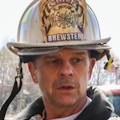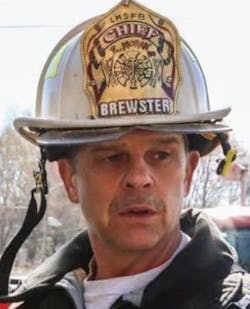Leadership Lessons: The Outside Fire Chief’s Guide to Success
Key Takeaways
- People who are hired as a fire chief from outside of the organization must be prepared to face operational-, political- and personnel-related challenges.
- Once a person is hired as a fire chief from outside of the organization, the individual should develop an action plan that covers the first 120 days in the position.
- The best approach for a new fire chief who was hired from outside of the organization to ensure that a SWOT analysis is conducted accurately is to establish a team of dependable staff members who represent each position within the organization.
Arriving as an outside fire chief in a department can be an extremely challenging as well as a rewarding occurrence. I can justify these thoughts from the recent experience that I acquired as an outside hire who was charged with reshaping the operations of a combination department. Living this journey granted me the opportunity to obtain a deep understanding of the operational-, political- and personnel-related challenges that an “outside boss” confronts. This wisdom—coupled with a career filled with lessons learned, followers cultivated and organizational triumphs gained—is the foundation for the following process and actions that an external hire needs to elevate an organization from good to great and to survive the demands of the position.
The search
When you’re ready to explore opportunities, do your research. Why is the position open? Is it because of retirement or lack of internal candidates or was the former chief asked to leave?
Examine the type of department, organizational structure, services delivered, staffing, form of government, and, most importantly, the control that the fire chief has over personnel and daily operations.
Check websites and social media accounts that are supported by the department, union and municipality to begin to evaluate the culture, mentality and character of the members. Reach out to trusted peers for their opinion. You must find the right fit both personally and professionally, or your tenure will be short-lived.
You’re hired
Develop an action plan that will take you through the first 120 days of your tenure. Although it includes multiple elements, it’s a simple, step-by-step process that ensures that basic information is collected and that relationships are established. You’re building the foundation by which your office will shape and guide the organization’s future, so slow and steady is key.
Remember this important detail: The firefighters that you’ll lead already completed research on you. You will have been Googled and checked on social media. Phone calls will have been made to firefighters and union officials in your previous department. Your leadership style, command skills and any other readily available—and not-so-readily available—information about you already will have been evaluated. How you guided your firefighters in the past and the personal character traits that you exhibited daily will have been exposed. Hopefully, you left a positive legacy in your former department. This is vital to capturing the respect of your new staff and to gaining the momentum that’s needed to thrive.
Get to know them
Your first endeavor is to execute an internal assessment of the department and its personnel. If the outgoing chief is available, meeting with this individual will give you good insight into any operational- or personnel-related issues and community concerns. Listen intently but remember that current issues that an outgoing chief might be facing both personally and work-related can skew that person’s opinion, so don’t jump to any conclusions.
Next, meet with your command staff to understand their assignments, duties and opinions of the organization. Hearing portrayals of the department’s current status and openly observing the personality, character and behavior of the members of the command staff provide insight to make an informed decision as to their future and as potential members of your “circle of trust.”
Next, meet with your company officers. These first-line supervisors are the most influential employees in the organization. They control the mind, spirit and operations of your line personnel daily. What they say is built from years of leading boots-on-the-ground firefighters, so their opinions matter. In all likelihood, the company officers are respected and proven members who will be responsible for ensuring that the directives, programs, and visions that come from your office are delivered and fulfilled. Don’t alienate them. They are essential for the future of the department that you are assembling.
Next, if department size allows, hold one-on-one meetings with each member regardless of rank, position or time on the job. Empowering these individuals to voice their opinions is priceless. This forum gives you an opportunity to discern the current work environment and to expose potential roadblocks and challenges. It also allows you to begin to set expectations and to develop trusted relationships.
In a large department, visit each station on each shift. Stop in for coffee or to eat a meal. Listen first, speak second and keep your comments general. Don’t make promises that you can’t keep.
Respond to multiple emergency incidents regardless of size, type or time of day. Unless it’s necessary, do this without taking command. Observe, listen and assess. This provides valuable information to determine whether personnel are trained and competent, whether adequate levels of operational effectiveness and efficiency are being delivered, and where advancements, revisions and improvements might be necessary.
Meet with union officials. Establishing exceptional relationships is imperative. A sit-down is fundamental to developing a strong and trusted connection. Conduct the meeting in a neutral location where members can be comfortable and open to expressing their thoughts and concerns.
When attending group meetings, bring one or two members of your command staff to serve as observers and who can assist you with introductions and document conversations.
Keep initial individual meetings confidential. Members will be more comfortable providing their opinions when they are in this environment.
Now, arrange a full department meeting. This is a constructive opportunity to provide a short message about what was found and how you intend to approach the future. Be factual, honest and straightforward. Communicating these findings is a step toward building a positive culture, improving morale and earning trust.
External relationships
Your next step involves connecting with local department heads, mutual-aid fire chiefs, regional and state fire and emergency medical groups (if the department delivers EMS), local community/church groups, and formal and informal community leaders. Trusted relationships with these stakeholders and local influencers are critical to ensuring the future of the organization.
There will be internal challenges to your position. You will be considered a visitor for a while, so local politics and existing community-based relationships might complicate your ability to perform your job. Robust connections and trusted personal relationships with your public supporters will help you to survive these encounters.
SWOT & strategic plan
A SWOT analysis helps to determine the internal and external strengths, weaknesses, opportunities and threats of the organization. The best approach to ensuring that this in-house activity is conducted accurately is to establish a team of dependable staff members who represent each position within the organization. Empowering these team- and task-oriented individuals to assist in developing this document is a key asset to your office.
Once the SWOT analysis is complete, using this information to develop a formal, multiyear strategic plan is the final and most decisive step in securing a solid foundation from which to move the department forward. Although this venture can be completed internally, I highly suggest that you hire a strategic planning consultant who is familiar with emergency service operations to navigate the team through the process.
During plan development, there will be full staff and small group meetings where the plan’s goals, objectives, responsibilities, implementation, timelines and benchmarks are established. Participants will be able to speak openly as to departmental concerns. Typical workforce issues, such as culture, work environment, operations, leadership, personnel management and training, will be brought to the forefront.
Although these events can be challenging and sometimes uncomfortable, conflict and differing philosophies can bring positive solutions and opportunities to the table. Don’t be overly concerned with the issues at hand. A strategic plan is designed to fix issues and set a path toward future excellence. Stay the course. It will pay dividends.
It’s during these discussions that an experienced external strategist who is capable of controlling the group’s focus, documenting the diverse opinions and composing the plan becomes invaluable to the finished product.
Moving forward
With the department’s unified strategic plan now complete and the trust and support of your members secured, you now have the solid foundation that you need to survive in your new environment and move the organization forward on its journey toward excellence in service.
To get a clearer sense of a five-year strategic plan, visit the Brewster Fire/Rescue Department website. Go to brewster-ma.gov/fire.
About the Author

Robert Moran
Robert Moran served as fire chief of the Brewster, MA, Fire Rescue Department from 2010–2024. Prior to that, he served 26 years with the Englewood, NJ, Fire Department, retiring in 2010 after 12 years as chief of department. Moran holds a master’s degree from Fairleigh Dickinson University, is a certified public manager, and has a Chief Fire Officer (CFO) designation from the Center for Public Safety Excellence. He serves as an adjunct instructor for Kean University and the New Jersey Division of Fire Safety and lectures at numerous regional and national fire service conferences. Along with his training partner, John Lewis, Moran writes the back page of the New York State Association of Fire Chiefs' Size-Up magazine and operates Jersey Guys Fire Service Training.
